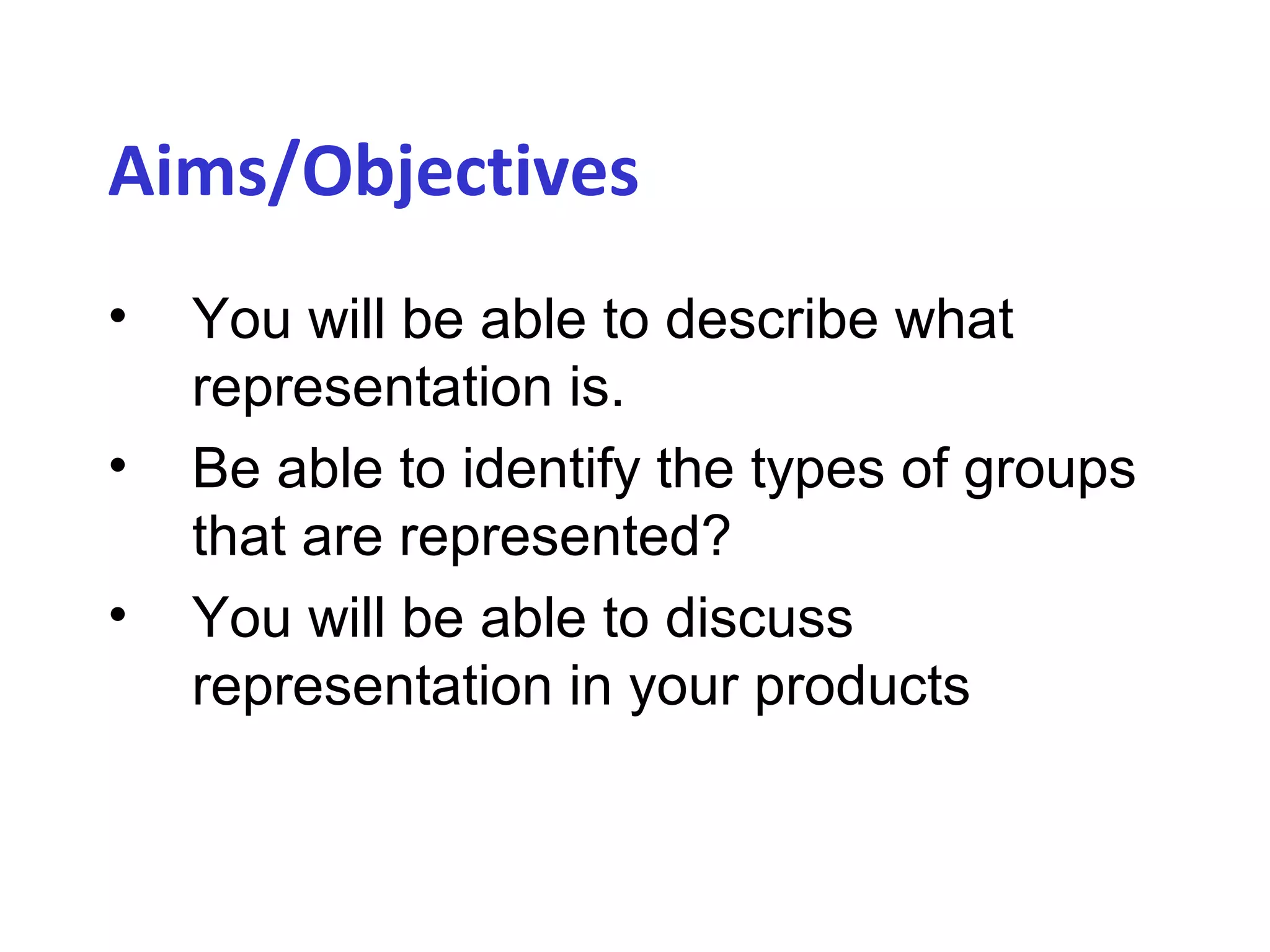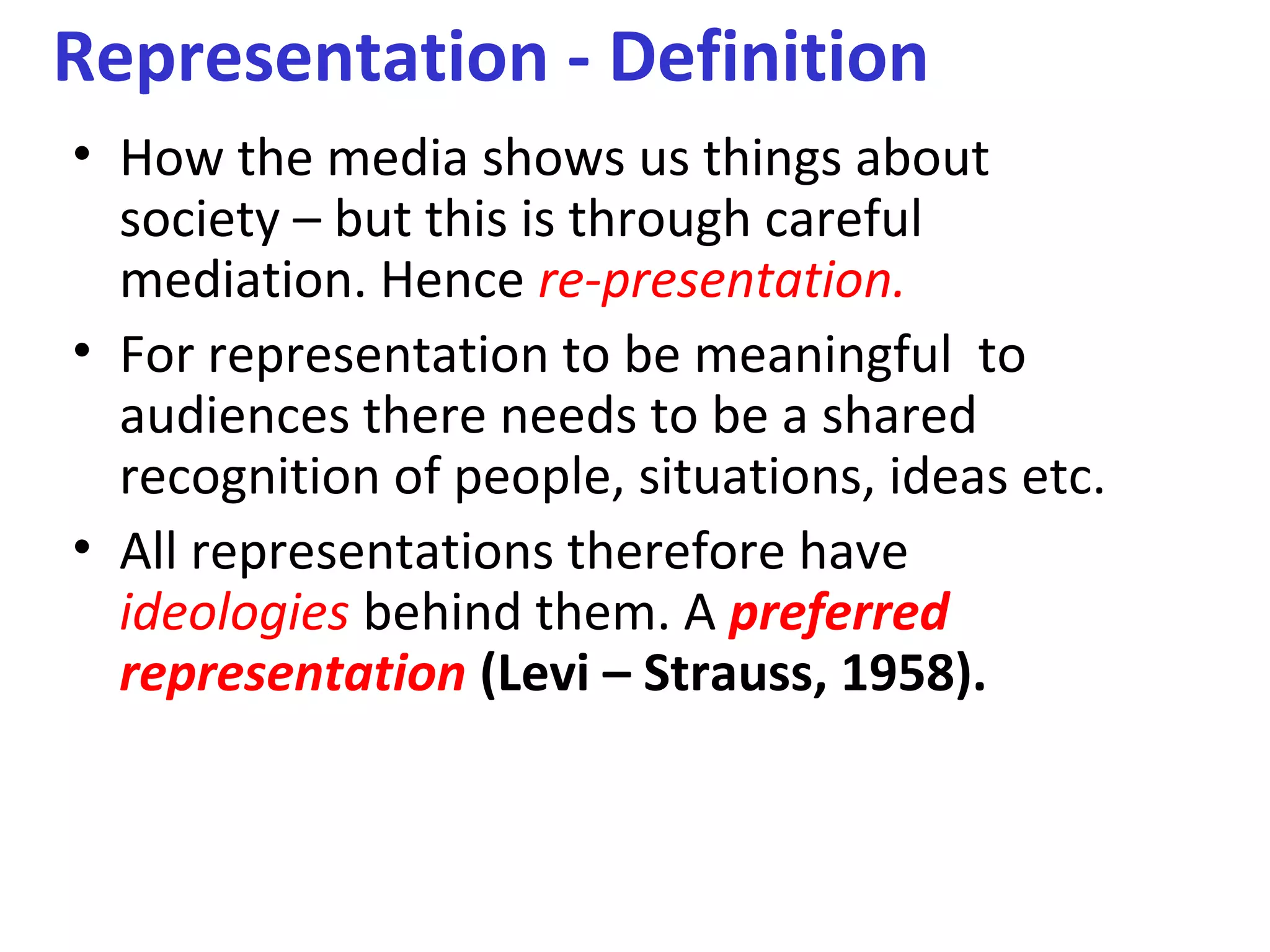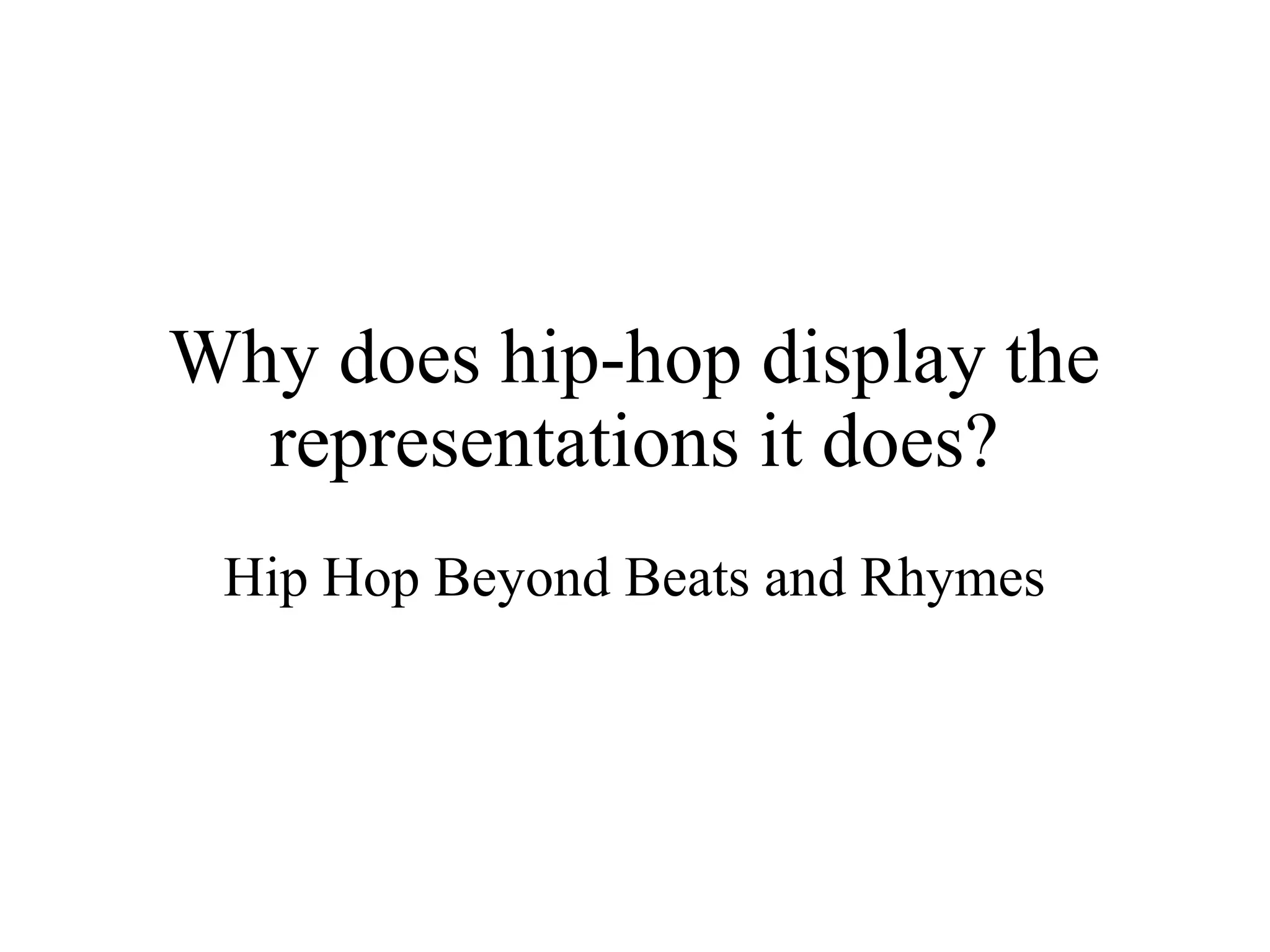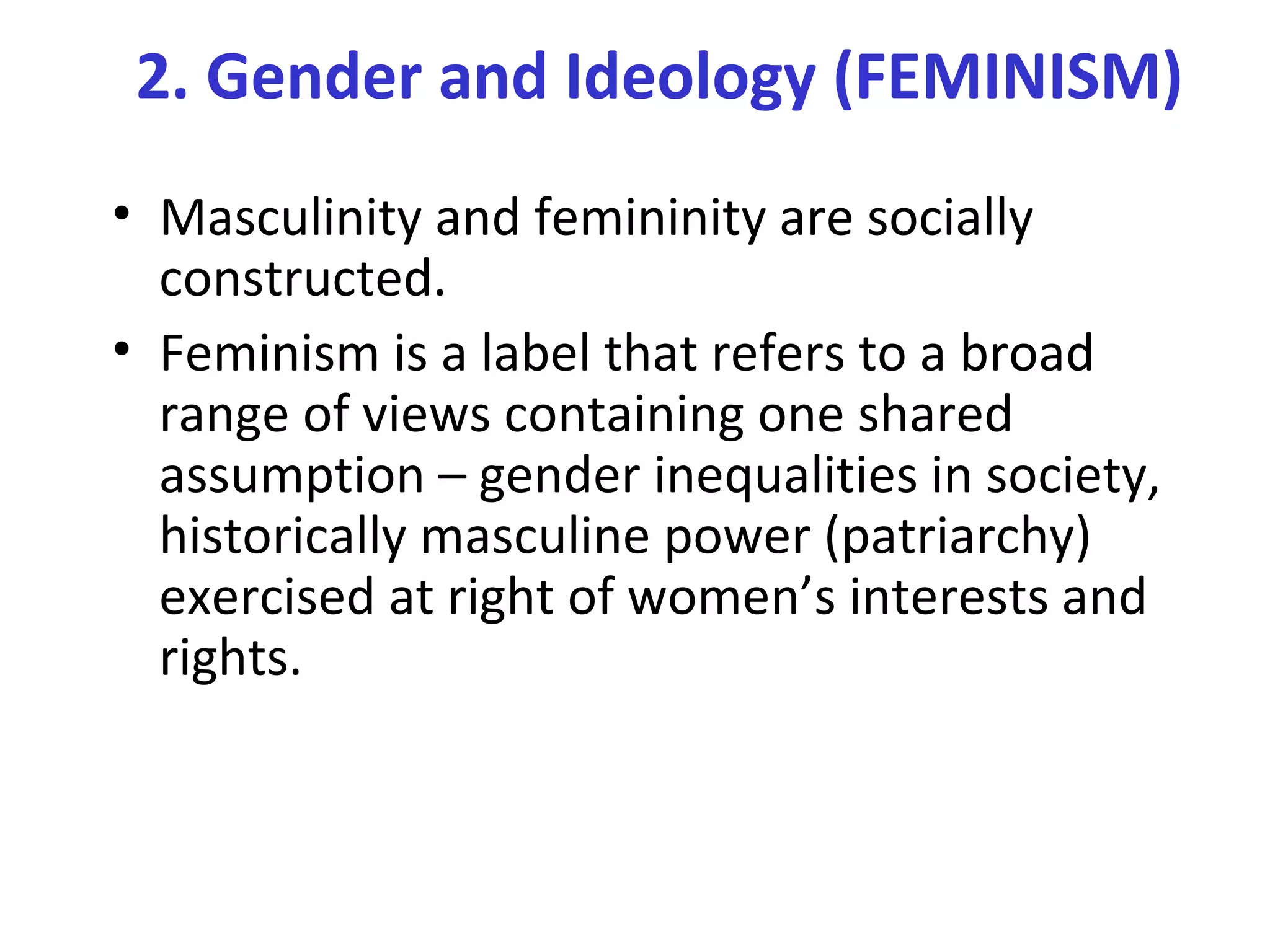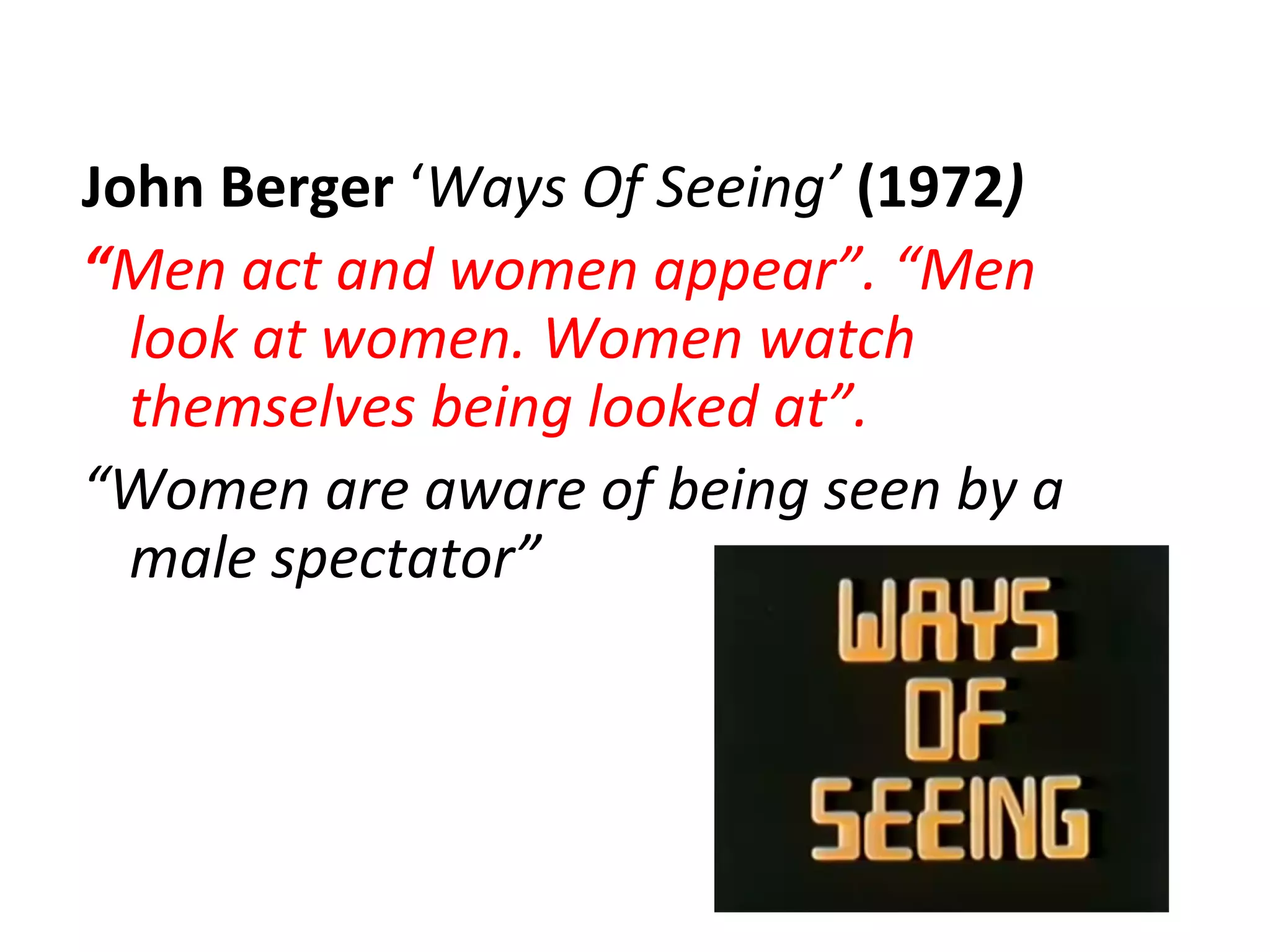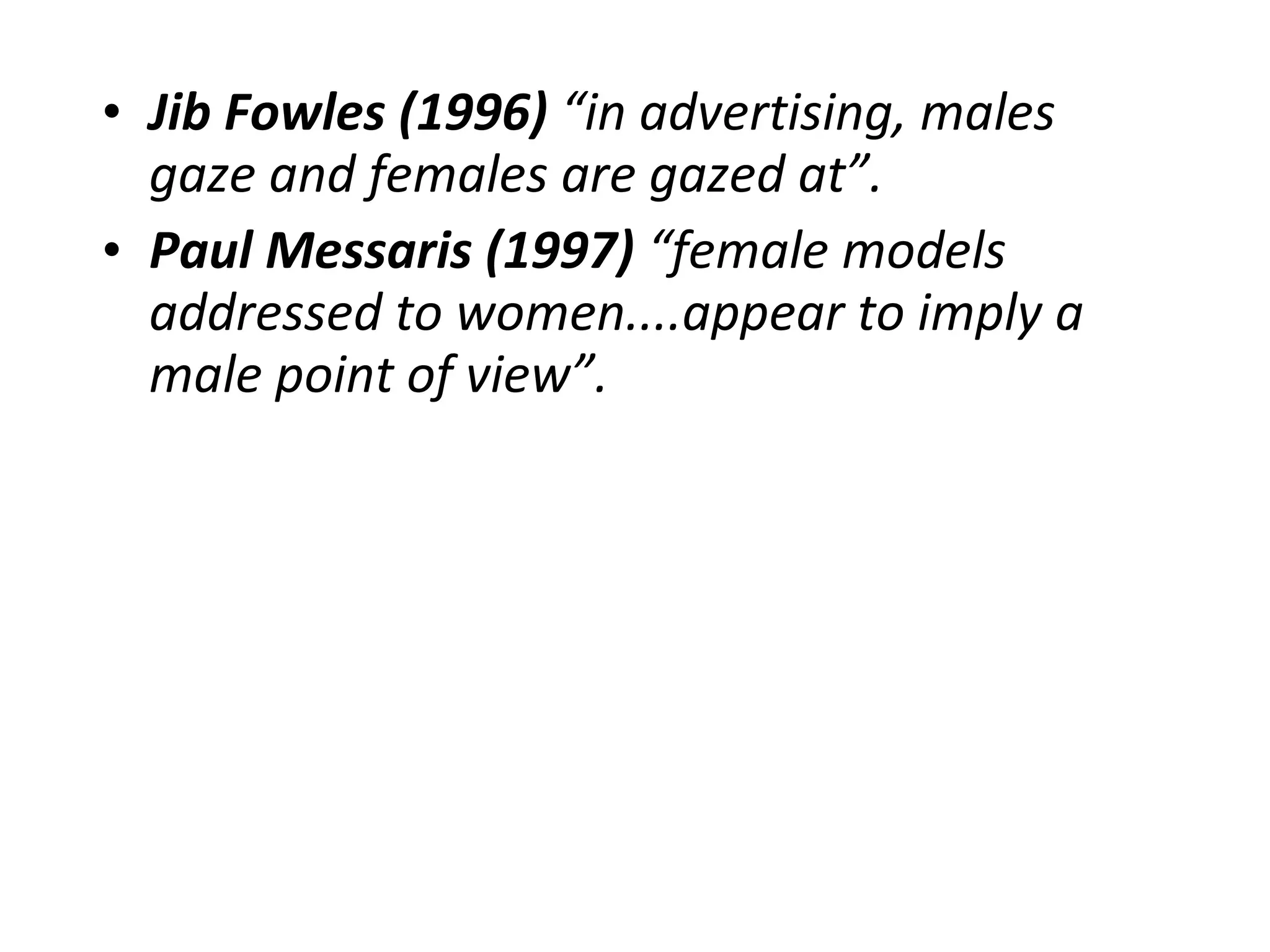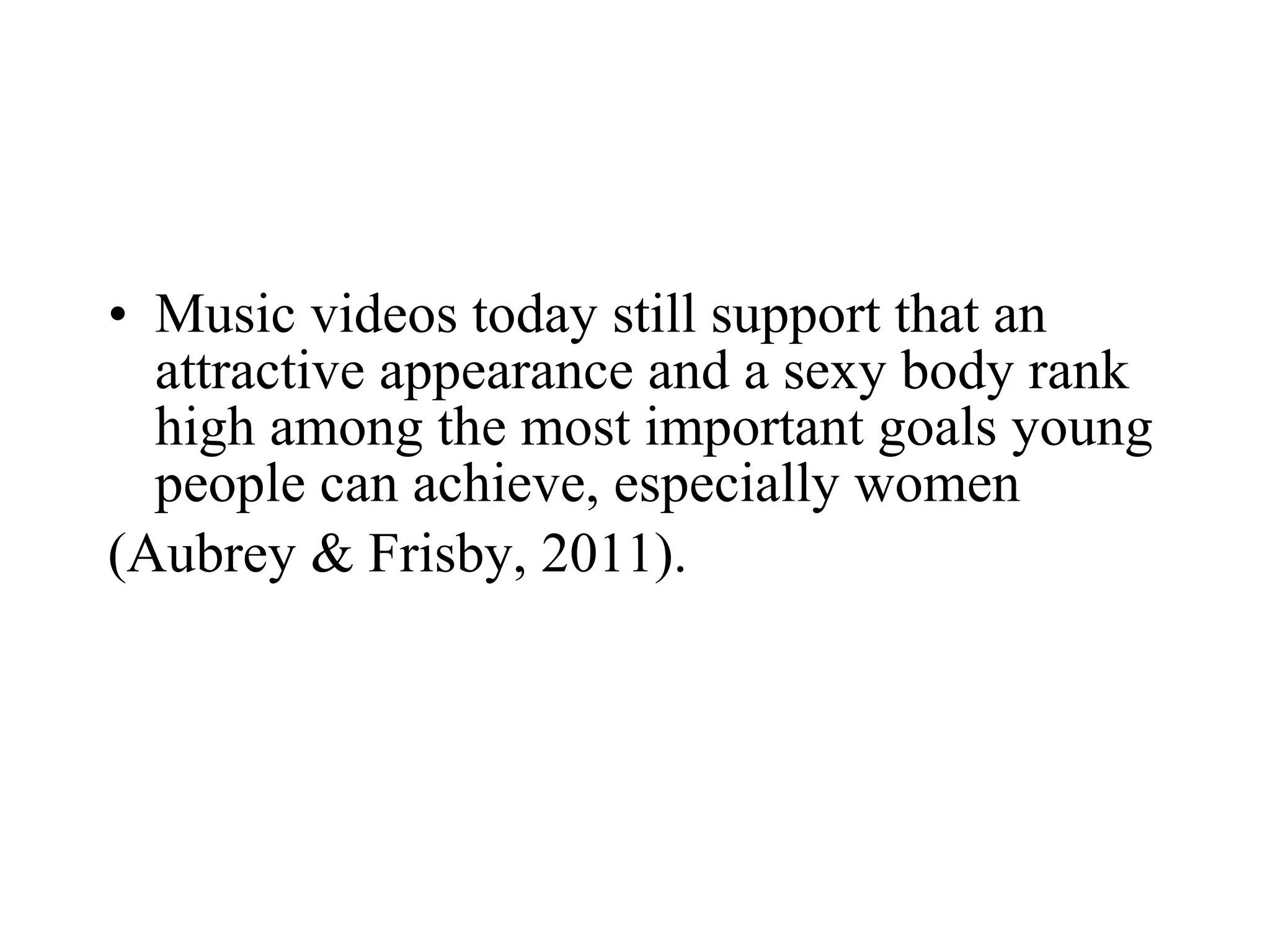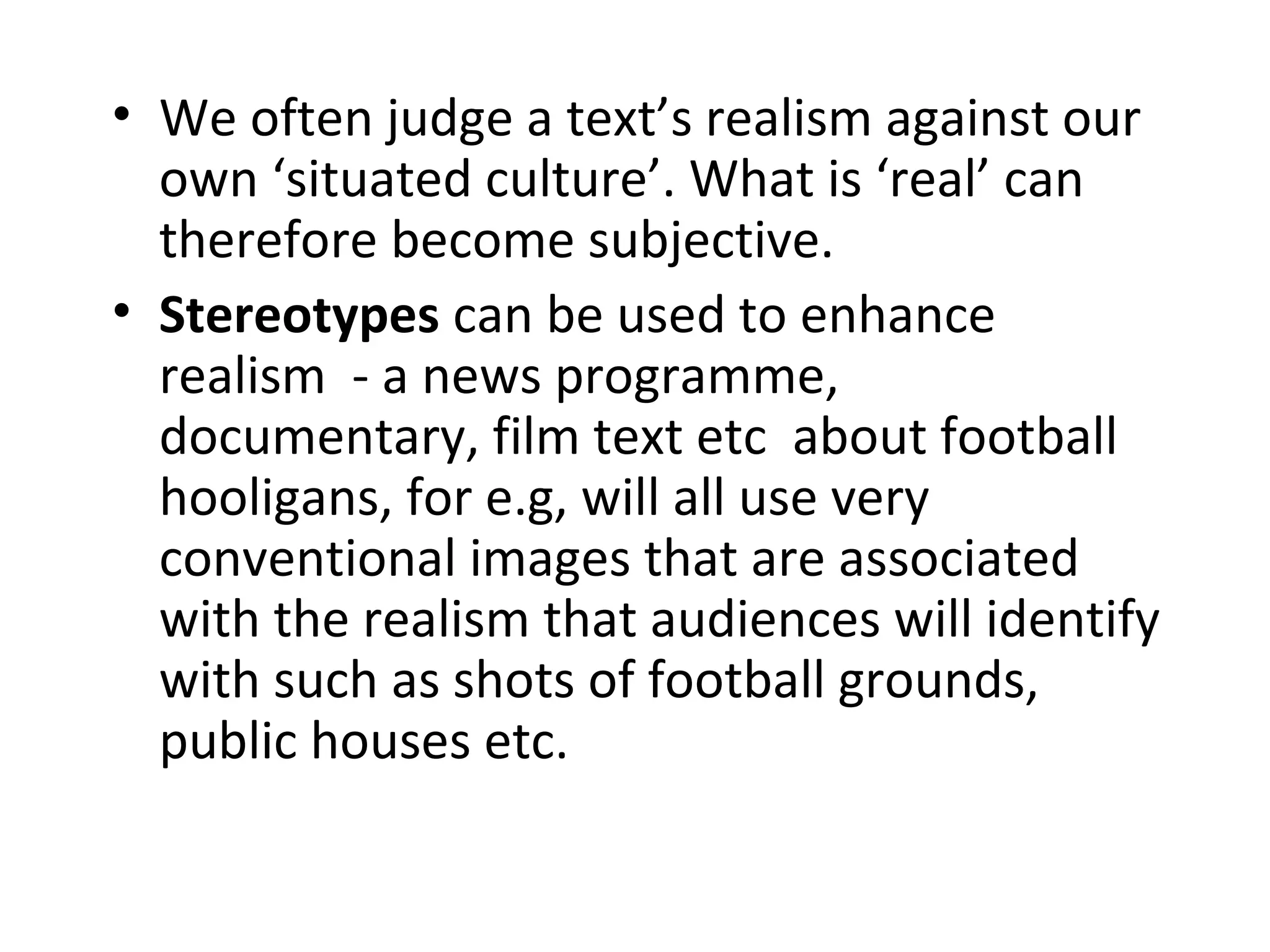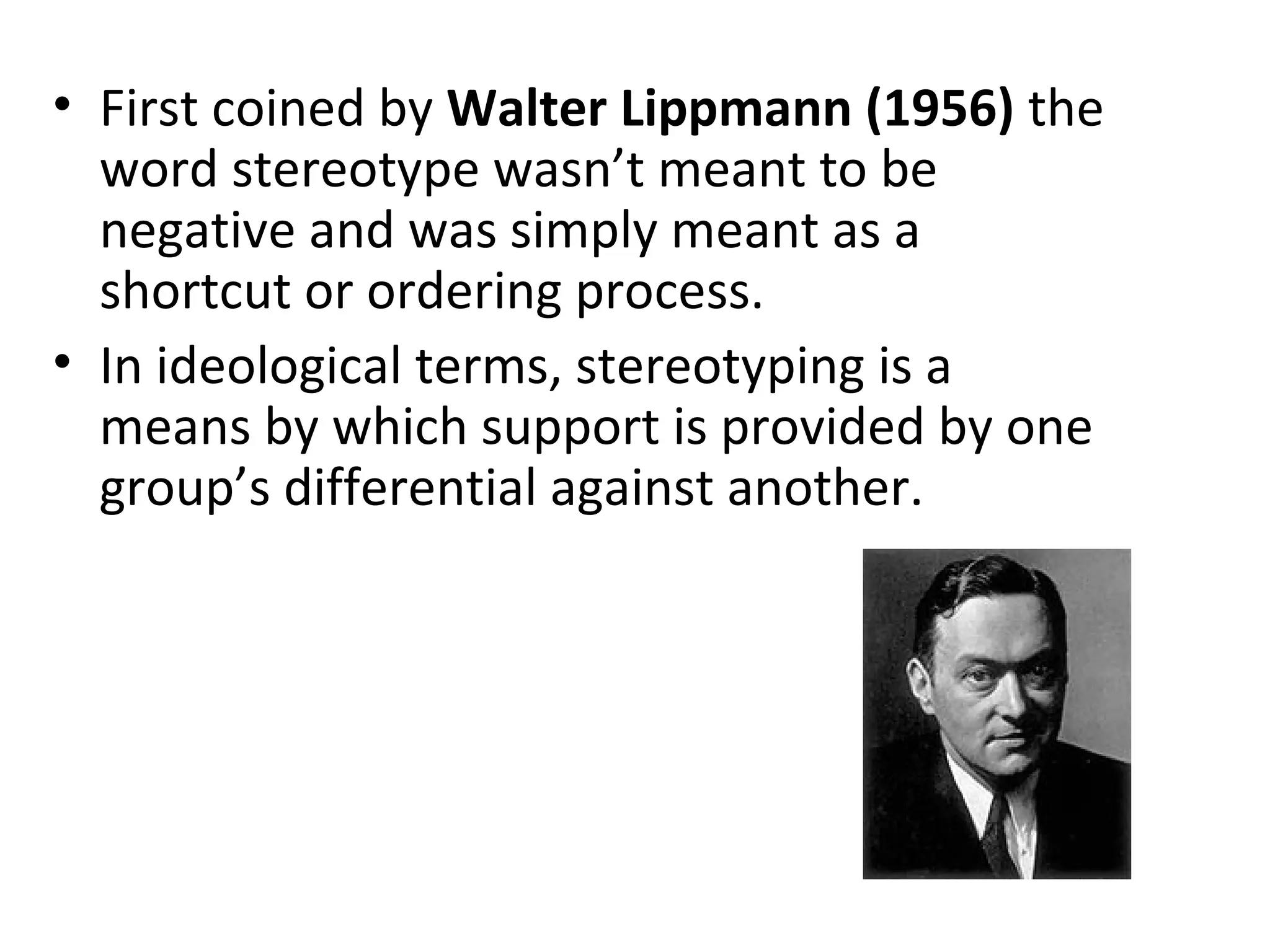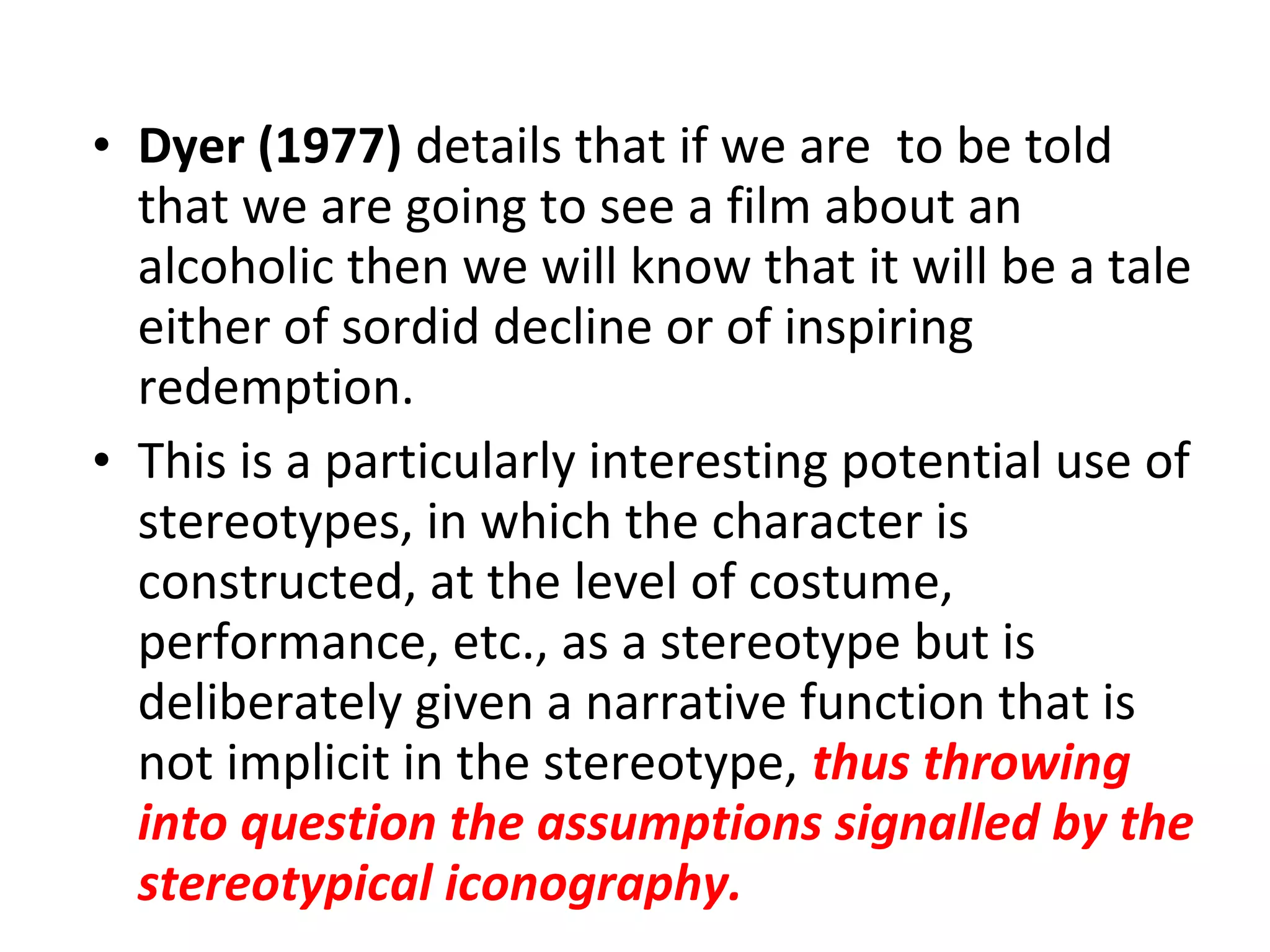This document provides an overview of key concepts related to representation in media, including:
- Representation refers to how media shows aspects of society through mediation and shared recognition. All representations have underlying ideologies.
- Groups are commonly represented through lenses of Marxism (reinforcing dominant ideologies), feminism (challenging patriarchal power structures), postmodernism, and through stereotypes.
- Stereotypes are simplifications that define our understanding but can enhance perceived realism; they are not always negative, untrue, or rigidly defined.
- Students should consider how their own media products use or challenge simplistic representations and reinforce or question dominant ideologies.

